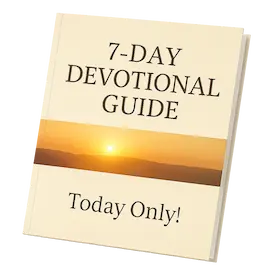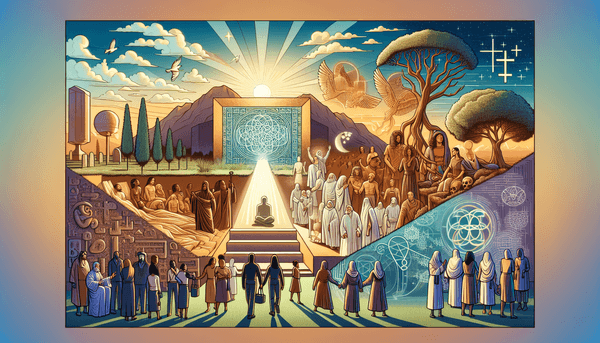Who is Melchizedek?
In the book of Genesis, we encounter Melchizedek, a figure shrouded in mystery. He appears as the king of Salem and a priest of the Most High God, blessing Abraham and offering bread and wine, an act reminiscent of the Last Supper. In Genesis 14:18-20, this encounter emphasizes the high regard Abraham holds for Melchizedek. The book of Hebrews further deepens the intrigue, drawing parallels between Melchizedek and Jesus Christ. Hebrews 7:1-17, for example, speaks of Melchizedek's priesthood as eternal and without genealogy, a precursor to the eternal priesthood of Jesus. These scriptures invite us to consider Melchizedek not only as a historical figure but also as a symbolic forerunner to the Messiah, underscoring the dual roles of king and priest that Jesus embodies.
Body Modifications: Piercings and Tattoos
Body modifications have become a complex issue within Christian circles, and the Bible offers insights that can guide believers. Leviticus 19:28 provides a direct command to the Israelites, instructing them not to mark their bodies with tattoos or cut themselves, practices associated with pagan mourning rituals. Under the New Covenant, the emphasis shifts from the letter of the law to the spirit, where personal relationship with God takes precedence. The New Testament, while not explicitly discussing tattoos or piercings, calls for believers to honor God with their bodies, temples of the Holy Spirit, as stated in 1 Corinthians 6:19-20. In this light, Christians are encouraged to make personal decisions that reflect their faith and glorify God, considering how their choices might influence their witness to others and adhere to the principles of Christian liberty.
The Bible and Feminism
The Bible's stance on gender equality begins with the creation narrative, where men and women are made in the image of God, as detailed in Genesis 1:27. This foundational truth sets the stage for recognizing the inherent value and equality of all people. Throughout the scriptures, we see women playing crucial roles, from the wisdom of Deborah to the hospitality of Lydia. These examples, coupled with the teachings of Jesus and the early Church, which often elevated the status of women in a counter-cultural way, build a case for mutual respect and equality. The early church leader, Paul, in Romans 16:1, commends Phoebe, a deacon of the church, reflecting the respect and important roles women held. Thus, the biblical narrative supports the idea that both men and women are called to work side by side in God's kingdom, pointing towards a biblical form of feminism rooted in the value and dignity bestowed by the Creator.
Expressions of Faith: Wearing a Cross
The cross has become a universal symbol of Christianity, representing the sacrifice of Jesus and the redemption it brings. Wearing a cross can be a deeply personal expression of faith, a reminder to the believer of the price paid for their salvation, and a witness to others of the hope they hold. However, it is essential to approach such expressions with reverence, mindful of the sacredness of what the symbol represents. As Jesus calls his followers to take up their cross and follow him (Matthew 16:24), so wearing a cross should reflect a life committed to bearing the implications of that call, pursuing a life marked by sacrifice, service, and love, as exemplified by Christ's own life and death on the cross.
Conclusion
In conclusion, our journey through these biblical topics underscores the vitality of scripture in addressing contemporary questions and guiding our lives as believers. Whether pondering the mysterious figure of Melchizedek, considering the implications of body modifications, or seeking to understand the Bible's view on gender equality, we are reminded of the importance of context, the evolution of divine revelation, and the personal application of faith. As we delve into the sovereignty of God and the call to humility, let us continue to seek wisdom in the Word, engage with our community, and rely on the guidance of the Holy Spirit as we navigate these nuanced topics. May our exploration lead us to a deeper understanding and a more authentic expression of our faith in a complex world.
FAQ
Q: Is Melchizedek an actual person or a symbol?
A: Melchizedek is presented in the Bible as an actual historical figure who interacted with Abraham. However, in the book of Hebrews, he is also used as a symbol or type of Christ, emphasizing his role as a priest-king and foreshadowing the eternal priesthood of Christ.
Q: Where did Melchizedek come from?
A: Melchizedek is described as the king of Salem, which is traditionally identified with Jerusalem. The Bible does not provide extensive details about his origins, but he is significant for his role as a priest and king and his encounter with Abraham.
Q: How does God view piercing and tattooing?
A: The Bible does not extensively address piercings and tattoos. Leviticus 19:28 prohibits these practices for the Israelites within a specific historical and cultural context. Under the New Covenant, there is more emphasis on the heart and personal relationship with God, though believers are encouraged to honor God with their bodies.
Q: How does the Bible feel about feminism?
A: The Bible affirms the equal value of men and women, created in God's image. It highlights the roles of significant women and teaches mutual respect and value, which can be interpreted as supporting a form of feminism that advocates for the dignity and equality of women in God's plan.






